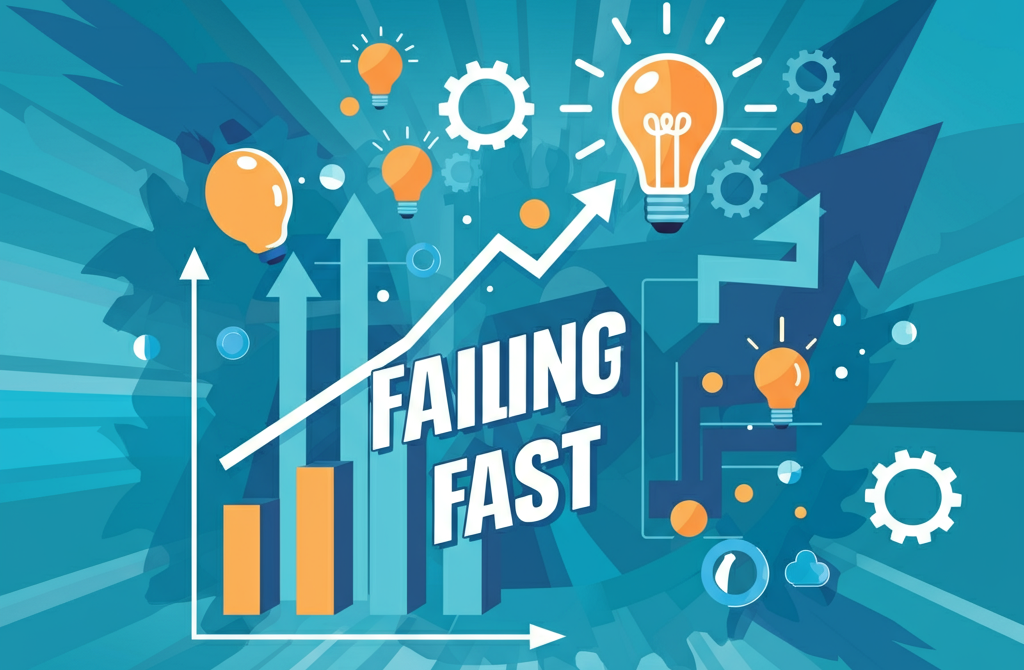Integrating customer insights makes for the cornerstone of a successful product strategy. They shed light on customer needs, preferences, and behaviors, enabling businesses to build products that truly resonate with their audience. However, in large-scale operations, ensuring a seamless flow of customer insights from various sources to the product strategy team can be a logistical challenge. In this guide, we’ll explore actionable tips to help executive teams streamline this process and effectively integrate customer insights into their product strategies.
1. Create a Clear and Structured Communication Plan
A well-organized communication plan is essential for effectively gathering, analyzing, and delivering customer insights to your product strategy team. Start by identifying the channels you’ll use to collect feedback—such as surveys, social media monitoring, feedback forms, and customer support interactions.
Next, establish a consistent schedule for sharing these insights. Whether through real-time dashboards, weekly updates, or monthly reports, consistency ensures a steady flow of information and prevents communication gaps. Clearly define the format and timing to keep everyone aligned and informed.
By implementing a structured plan, executive teams can ensure integrated customer insights are not only accessible but actionable, enabling the product strategy team to make data-driven, informed decisions.
Key elements to include in your communication plan:
- Defined communication channels: Specify where updates will be shared (e.g., email, shared folders, or project management tools) to minimize confusion and ensure easy access to insights.
- A designated point person: Assign someone to compile and share insights with the executive team, streamlining the process and avoiding delays.
- Scheduled reporting: Set clear expectations by defining when updates will be shared, such as weekly or monthly. Consistency keeps stakeholders on track.
- Feedback and discussion guidelines: Provide a system for stakeholders to ask questions or give feedback on shared insights, fostering open communication and deeper collaboration.
- Issue escalation protocols: Outline steps for addressing challenges or concerns arising from the insights, ensuring swift and effective resolutions.
By incorporating these components, you can build a streamlined, efficient system for sharing insights, empowering your team to make strategic, customer-focused decisions.
2. Prioritize Powerful Data Management Tools
Effective data management turns raw customer feedback into actionable insights. Advanced systems simplify collecting, organizing, and analyzing customer data on a single platform. This reduces manual effort and minimizes human error.
Real-time data access empowers product teams to quickly respond to customer needs, stay ahead of competitors, and make informed decisions. Advanced analytics tools enhance this by revealing trends and patterns in customer behavior. With a clearer understanding of customer pain points and preferences, teams can confidently make data-driven decisions that drive growth.
To elevate your data management strategy, consider these essential tools:
- Data Warehousing: Built for analysis and reporting, data warehouses centralize information from multiple sources into one place. This simplifies analysis and supports better decision-making.
- Business Intelligence (BI) Platforms: BI platforms offer dynamic dashboards and customizable reports, helping teams easily visualize data and spot trends, patterns, and anomalies for smarter, faster decisions.
- Customer Relationship Management (CRM) Systems: CRMs track customer interactions, preferences, and behaviors throughout their journey, helping organizations better understand customers and deliver personalized experiences.
- Marketing Automation Software: Automate tasks like email campaigns, social media, and lead nurturing with marketing automation tools. These platforms help teams scale efforts while focusing on effective, data-driven strategies.
- Data Management Platforms (DMPs): DMPs aggregate, store, and analyze customer data from multiple sources. They enable precise audience segmentation and personalized messaging, ensuring more targeted and effective marketing campaigns.
- Social Media Management Tools: Manage your brand’s social media presence with tools designed to monitor activity, schedule posts, and provide analytics. These platforms help maintain a consistent, engaging online presence and drive meaningful connections with your audience.
By leveraging the right tools, product teams are better equipped to harness the full potential of their data, unlocking insights that lead to smarter decisions.
3. Foster Cross-Functional Collaboration
Integrated customer insights should not live exclusively within the product strategy team. Encouraging collaboration across departments—such as sales, marketing, and customer support—enhances the overall quality and depth of the product strategy.
Each department brings a unique perspective, contributing to a more holistic approach to product development. For example, sales teams can provide frontline insights on customer objections, while marketing teams can highlight messaging that resonates most. Cross-functional input ensures the product strategy aligns with organizational goals and addresses every aspect of the customer experience, from functionality to satisfaction.
Additionally, fostering collaboration helps break down silos and cultivates a culture of teamwork and communication. By uniting teams around the shared goal of creating exceptional products, organizations can boost efficiency and innovation.
4. Continuously Gather and Act on Feedback
A successful product strategy adapts to evolving customer needs and shifting market dynamics. To stay ahead, teams must prioritize the consistent and proactive collection of feedback. This ongoing process helps uncover pain points and areas for improvement early, empowering teams to refine their approach with precision. It also enables timely adjustments in response to changes in customer behavior or market trends. By iterating frequently, product strategies remain relevant, impactful, and aligned with customer expectations.
Here are keyways to gather and act on feedback:
- Surveys: Send tailored surveys to collect specific insights, such as user satisfaction or feature requests. These provide a direct line to customer opinions and preferences.
- User Testing: Observe real users interacting with your product and collect real-time feedback. This hands-on approach highlights usability challenges and improvement opportunities.
- Competitive Analysis: Analyze similar products in the market to uncover strengths, weaknesses, and gaps. Look at customer reviews, feature offerings, and user experiences to gain valuable insights.
- Customer Support Channels: Monitor support channels like email, social media, or chat to identify recurring issues or concerns. These insights can inform improvements and address pain points.
- Data Analysis: Dive into user engagement metrics, behavior patterns, and conversion rates. Tools like A/B testing can help determine what features, designs, or layouts resonate most with users.
By continuously gathering and acting on feedback, teams can ensure their product strategy adapts to customer needs and remains a strong driver of growth and success.
5. Define Clear Metrics to Measure Success
To determine whether your product strategy is effective, it’s essential to establish clear success metrics and track progress consistently.
Below are key metrics to consider and the value they bring:
- Customer Satisfaction: Gauging how satisfied customers are with your product is a core indicator of success. Use surveys, reviews, and feedback channels to measure this. High satisfaction rates signify that your product meets or exceeds user expectations.
- Usage and Adoption Rates: Monitor the number of users actively engaging with your product and the frequency of use. High usage rates suggest that customers find value in your product and continue to rely on it over time.
- Revenue Growth: For revenue-driven businesses, tracking sales growth is critical. Increasing revenue from both new and existing customers highlights that your product is solving their problems and driving profitability.
- Customer Feedback: Direct input from users offers a wealth of insight into your product’s performance. Analyze both positive and negative feedback to identify areas for improvement and potential new features. Proactively seeking feedback also signals your commitment to continuous improvement and customer satisfaction.
- User Engagement: Engagement metrics such as daily or monthly active users, time spent on the platform and repeat usage can reflect how well your product retains and satisfies users. Use this data to refine your offering and maintain strong engagement.
- Customer Support: Effective, timely customer support is vital to building trust and loyalty. Providing thoughtful solutions and seeking feedback on customer experiences ensures strong relationships and a better overall product experience.
- Social Media Presence: A robust social media strategy helps you stay connected with customers and foster brand loyalty. Use these platforms to share updates, engage with your audience, and address concerns in real time.
Using Metrics
Regularly analyzing these metrics not only assesses the effectiveness of your strategy but also uncovers opportunities for improvement. Gathering feedback from customers and stakeholders enhances this evaluation, providing valuable insights into how well your product meets their needs.
Remember, measuring success isn’t a one-time activity—it’s a continuous process that should be embedded in your organization’s framework. Align your product success metrics with broader company goals to ensure strategic consistency. By consistently reviewing and refining your approach based on measurable outcomes, you’ll position your product—and your business—for long-term success.
Conclusion
Integrating customer insights into product strategy requires a careful blend of creativity and analysis. By prioritizing clear communication, leveraging advanced tools, encouraging cross-team collaboration, and embracing continuous feedback, leadership teams can craft strategies that genuinely align with customer needs while driving meaningful growth. With these principles in place, your organization can turn customer insights into a powerful advantage, setting the stage for long-term success.
Click here for a post on helping stakeholders understand tech value.






